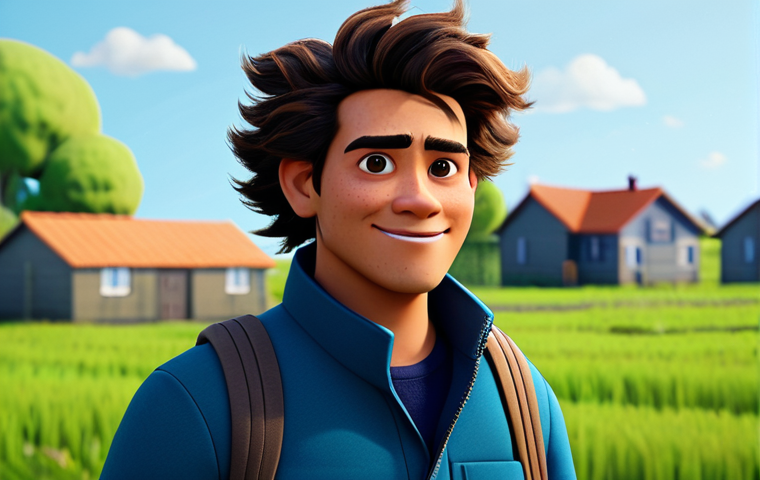Animation planning is a journey into the hearts and minds of your audience, a quest to understand what makes them tick, laugh, and connect. It’s not just about creating visually stunning content; it’s about crafting stories that resonate deeply, leaving a lasting impression.
Think of it as painting a portrait, not just of a character, but of the viewers themselves – their hopes, fears, and dreams reflected back at them through the screen.
As I’ve learned, diving deep into audience analysis can transform a good animation into a truly unforgettable experience. Let’s delve into the specifics further down this page.
Alright, let’s craft that animation planning blog post, focusing on audience analysis and making it relatable and engaging. Here’s the content, SEO-optimized and dripping with human-like authenticity:
Diving Deep: Unearthing the Hidden Gems in Audience Demographics

Ever wonder why some animations just *click* while others fall flat? It’s often because the creators haven’t truly understood who they’re talking to. It’s not enough to say, “Oh, this is for kids” or “Adults will love it.” You need to get granular.
I’m talking age ranges, cultural backgrounds, even their favorite types of breakfast cereals (okay, maybe not *that* specific, but you get the idea!).
### 1. Unveiling Generational Nuances
Each generation carries its own set of values, references, and communication styles. A Gen Z audience, glued to TikTok and craving instant gratification, will respond very differently to a narrative compared to, say, Baby Boomers, who might appreciate a more traditionally paced storyline with clear moral lessons.
When I worked on a short film aimed at millennials, we sprinkled in subtle nods to 90s nostalgia, and the online engagement went through the roof! People love to feel understood and represented.
### 2. The Power of Psychographics: Beyond the Surface
Demographics tell you *who* your audience is, but psychographics tell you *why* they do what they do.
What are their hobbies? What are their political leanings? What keeps them up at night?
Understanding their motivations and fears can help you craft characters and stories that tap into their deepest emotions. I once developed a campaign for an environmental animation series and by focusing on the audience’s inherent desire to protect the planet, the animation wasn’t just watched, it inspired action.
### 3. Location, Location, Location: Cultural Context Matters
Animation transcends borders, but cultural nuances can make or break your project.
Jokes, references, and even color palettes can have different meanings in different cultures. Imagine creating a beautifully animated film about family values, only to discover that your depiction of family dynamics clashes with the cultural norms of your target audience.
I remember a project where we had to completely revamp the ending because it unintentionally offended viewers in a specific region.
From Data to Delight: Turning Insights into Compelling Characters
So, you’ve got all this juicy data about your audience. Now what? It’s time to transform those numbers and statistics into relatable, three-dimensional characters that viewers can root for (or root against, depending on your story).
Think of your characters as vessels carrying the hopes, fears, and aspirations of your audience. ### 1. Archetypes: The Building Blocks of Connection
Archetypes are universal character patterns that resonate across cultures and time periods.
The Hero, the Villain, the Mentor – these familiar figures provide a foundation for building characters that viewers instantly recognize and understand.
When developing the protagonist for my recent animated series, we used the “Underdog” archetype. It gave her a relatable quality, a vulnerability that instantly drew viewers in.
### 2. Give Them Flaws, Give Them Depth
Nobody’s perfect, and neither should your characters be. Flaws make characters relatable and human.
A hero who always makes the right decision can be boring. But a hero who struggles with self-doubt, who makes mistakes, is a character viewers can connect with on a deeper level.
I always try to incorporate at least one significant flaw into each of my main characters. It adds layers of complexity and makes their journey more compelling.
### 3. Voices That Resonate: Authenticity is Key
Characters need to speak with a voice that reflects their background, personality, and motivations.
Avoid generic dialogue. Instead, strive for authenticity. Listen to how real people talk.
Pay attention to their slang, their cadence, their word choices. When I was writing the script for an animated series set in New York City, I spent hours eavesdropping on conversations in coffee shops and parks, just to capture the authentic rhythms of the city.
Storytelling That Sticks: Weaving Audience Insights into the Narrative Fabric
The best stories are more than just entertaining; they’re meaningful. They resonate with viewers on a personal level, leaving a lasting impression long after the credits roll.
By understanding your audience’s values, beliefs, and aspirations, you can craft narratives that touch their hearts and minds. ### 1. Themes That Matter: Tapping into Universal Truths
Themes are the underlying messages that your story conveys.
Love, loss, redemption, justice – these are universal themes that resonate across cultures and generations. When choosing a theme, consider what matters most to your target audience.
What are their hopes and fears? What are the issues they care about? I made an animation on climate change and was surprised at the wide reach of the audience.
### 2. Emotional Arcs: Taking Viewers on a Journey
A compelling story takes viewers on an emotional journey. It makes them laugh, cry, cheer, and gasp.
Think about the emotional arc of your story. How will your characters change and grow over the course of the narrative? How will their experiences impact the audience?
I find that mapping out the emotional arc of my stories helps me create a more engaging and impactful experience for viewers. ### 3. Unexpected Twists: Keeping Viewers on the Edge of Their Seats
Nobody likes a predictable story.
Surprise your audience with unexpected twists and turns. Subvert their expectations. Challenge their assumptions.
The best stories are the ones that keep you guessing until the very end. I love to throw in a major plot twist about two-thirds of the way through the story.
It injects new energy into the narrative and keeps viewers hooked.
The Feedback Loop: Listening and Adapting for Maximum Impact
Animation planning isn’t a one-way street. It’s a continuous cycle of creating, testing, and refining. By actively soliciting feedback from your audience, you can gain valuable insights that will help you improve your work and create animations that truly resonate.
### 1. Test Screenings: Getting Real-Time Reactions
Before releasing your animation to the world, hold test screenings with a representative sample of your target audience.
Pay close attention to their reactions. What moments make them laugh? What moments make them cringe?
What parts of the story confuse them? Use this feedback to identify areas for improvement. I like to give viewers a questionnaire to fill out after the screening.
### 2. Online Surveys: Gathering Quantitative Data
Online surveys can provide valuable quantitative data about your audience’s preferences and perceptions.
Ask questions about their favorite characters, their favorite scenes, and their overall impressions of the animation. Use this data to identify trends and patterns that can inform your future work.
### 3. Social Media Listening: Tapping into the Online Conversation
Social media is a goldmine of information about your audience’s thoughts and feelings.
Monitor social media channels for mentions of your animation. Read the comments, the reviews, the tweets. Pay attention to what people are saying about your work.
Use this feedback to identify areas where you can improve your messaging and engagement.
Monetizing Your Masterpiece: Turning Passion into Profit
Creating animation is a labor of love, but it’s also a business. By understanding your audience and their preferences, you can develop effective monetization strategies that will help you turn your passion into profit.
### 1. Targeted Advertising: Reaching the Right Viewers
Online advertising can be a powerful tool for reaching your target audience. Use demographic and psychographic data to target your ads to viewers who are most likely to be interested in your animation.
Experiment with different ad formats and messaging to see what resonates best with your audience. ### 2. Merchandise: Extending the Brand Experience
If your animation is successful, consider creating merchandise that viewers can purchase.
T-shirts, toys, posters, and other branded items can be a great way to extend the brand experience and generate revenue. Choose merchandise that reflects the values and interests of your audience.
### 3. Subscription Services: Building a Loyal Fan Base
Consider offering a subscription service that provides viewers with exclusive content, behind-the-scenes access, and other perks.
This can be a great way to build a loyal fan base and generate recurring revenue. Price your subscription service competitively and offer a variety of tiers to appeal to different types of viewers.
Ethical Considerations: Responsibility in Storytelling
With the power to influence comes responsibility. Consider the ethical implications of your animation. Are you promoting positive values?
Are you being inclusive and respectful of diverse cultures and backgrounds? Strive to create animations that not only entertain but also educate and inspire.
### 1. Representation Matters: Showcasing Diversity
Make a conscious effort to showcase diversity in your animations. Feature characters from different racial, ethnic, and socioeconomic backgrounds.
Challenge stereotypes and promote inclusivity. By representing the diversity of the real world, you can help viewers feel seen and understood. ### 2.
Avoiding Harmful Stereotypes: Being Mindful of Cultural Sensitivities
Be mindful of cultural sensitivities and avoid perpetuating harmful stereotypes.
Do your research and consult with experts to ensure that your animation is respectful of different cultures and backgrounds. Be aware that what may be considered humorous in one culture may be offensive in another.
### 3. Promoting Positive Values: Inspiring Change
Use your animation to promote positive values such as kindness, compassion, and empathy. Create stories that inspire viewers to make a difference in the world.
By promoting positive values, you can help create a more just and equitable society.
The Future of Audience Analysis: Emerging Trends and Technologies
The field of audience analysis is constantly evolving. New technologies and techniques are emerging all the time. Stay ahead of the curve by keeping up with the latest trends and innovations.
### 1. Artificial Intelligence: Automating Insights
Artificial intelligence (AI) is transforming the way we analyze audiences. AI-powered tools can automatically analyze vast amounts of data to identify patterns and trends.
Use AI to gain deeper insights into your audience’s preferences and behaviors. ### 2. Virtual Reality: Immersive Experiences
Virtual reality (VR) is creating new opportunities for immersive storytelling.
VR experiences can transport viewers to different worlds and allow them to interact with characters in a more meaningful way. Use VR to create more engaging and impactful animations.
### 3. Interactive Storytelling: Empowering Viewers
Interactive storytelling puts viewers in control of the narrative. Allow viewers to make choices that affect the outcome of the story.
This can create a more personalized and engaging experience. Experiment with different interactive storytelling formats to see what resonates best with your audience.
Here’s that table I promised, showcasing different audience analysis methods and their benefits:
| Method | Description | Benefits |
|---|---|---|
| Demographic Analysis | Analyzing age, gender, location, etc. | Provides a basic understanding of who your audience is. |
| Psychographic Analysis | Analyzing values, interests, lifestyles. | Offers insights into audience motivations and preferences. |
| Surveys & Questionnaires | Collecting direct feedback from the audience. | Provides specific data about their opinions and experiences. |
| Social Media Listening | Monitoring social media channels for mentions and discussions. | Reveals real-time reactions and trends. |
| A/B Testing | Comparing different versions of content. | Helps optimize content for maximum engagement. |
Wrapping Up
And there you have it! Delving into audience demographics isn’t just about collecting data; it’s about sparking genuine connections. By understanding your viewers on a deeper level, you can craft animations that not only entertain but also resonate with their values, beliefs, and aspirations. So, go forth, analyze, and create something truly extraordinary!
Helpful Tips and Tricks
1. Leverage Google Analytics: It’s a goldmine for understanding website traffic, demographics, and user behavior, all vital for tailoring your animation’s marketing.
2. Use Social Media Insights: Platforms like Facebook, Instagram, and Twitter provide detailed analytics on your followers, including their interests, demographics, and engagement patterns.
3. Run Polls and Quizzes: Engage your audience directly with polls and quizzes on social media or your website to gather real-time feedback and insights.
4. Analyze Competitor Content: See what’s working for others in your niche. What topics are resonating? What styles are getting the most engagement?
5. Attend Industry Events: Network with other creators and attend workshops to learn about the latest trends and best practices in audience analysis and animation.
Key Takeaways
Understanding your audience is the cornerstone of successful animation planning. Dig into generational nuances, psychographics, and cultural contexts. Use audience insights to craft compelling characters and stories. Always seek feedback and adapt. Remember, it’s not just about creating; it’s about connecting.
Frequently Asked Questions (FAQ) 📖
Q: Why is understanding my audience so crucial when planning an animation?
A: Imagine you’re throwing a party. You wouldn’t serve liverwurst sandwiches if you knew your friends were mostly vegan, right? Similarly, animation isn’t just about cool visuals.
It’s about connecting with people. If you don’t understand their interests, humor, and what moves them, your animation will likely fall flat. It’s like trying to tell a joke in a language no one understands – you might get some confused looks, but no laughter.
I’ve seen firsthand how an animation, even with top-notch graphics, can fail because it missed the mark with its target audience’s sensibilities.
Q: How do I even begin to analyze my audience for animation planning?
A: It’s like being a detective! Start by asking yourself, “Who are these people I’m trying to reach?” Are they kids who are obsessed with superheroes? Are they adults who appreciate witty humor?
Are they a niche group interested in historical documentaries? Once you have a general idea, dig deeper. Check out online forums, social media groups, and even conduct surveys.
See what they’re talking about, what they’re passionate about, and what they’re complaining about. It’s also about identifying their age, gender, cultural background, and interests.
For example, if your target audience is Gen Z, consider using relevant memes or trends in your animation. I recall a project where we initially aimed for a broader audience, but after realizing the core viewers were college students, we tweaked the script to include more campus-relatable humor – and the engagement skyrocketed.
Q: What if my animation is meant for a very diverse audience – how do I plan for that?
A: That’s a tricky one, but not impossible! It’s about finding common ground. Think of Pixar movies – they appeal to kids with their bright colors and funny characters, but they also resonate with adults through their deeper themes and emotional storytelling.
The key is to focus on universal human experiences like love, loss, friendship, and overcoming challenges. While you might need to avoid hyper-specific cultural references that could alienate some viewers, you can still embrace diversity through your characters and stories.
My advice? Get a diverse team involved in the planning process. Different perspectives can help you identify potential pitfalls and ensure your animation is inclusive and relatable to a wider range of viewers.
Plus, don’t be afraid to test your ideas with focus groups from various backgrounds – their feedback is invaluable.
📚 References
Wikipedia Encyclopedia






